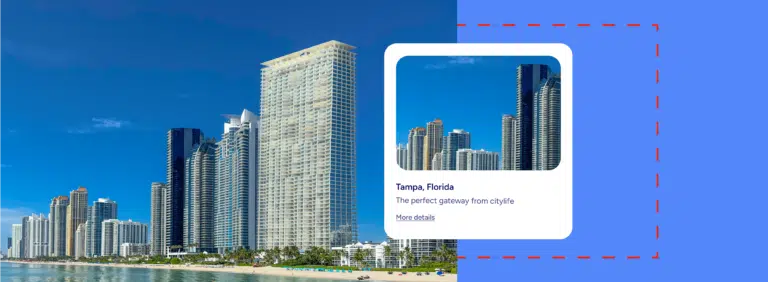Ah economics, everyone’s least favorite science. Though it’s not a preferred topic of conversation, Airbnb economics is a necessary discussion for hosts to have. In short, pricing your Airbnb listing is the bread and butter of turning this sharing community into a professional sector, so you can imagine how important it is to tackle this loaf exactly right.
Luckily, there are two main streams that flow to smart pricing models for your Airbnb listing, and the two streams can also cross quite nicely. The first is cost & profit and the second: comparables. But before we dive into strategy, let’s take a dip in logistics.
How Does Airbnb Pricing Strategy Work On Airbnb Itself?
When first creating your listing, Airbnb suggests a base price that best fits the property you’ve described so far. This price tip generator mixes together few of your property’s specifics and a pinch of local rental market trends. You can even play around with the proportions, if you so choose.
For newer hosts without much profile padding, Airbnb recommends starting below the suggested rate to begin a steady flow of bookings. However, a price tip should never be looked at blindly. Regardless of the level of experience, all Airbnb hosts should spend some additional time researching and comparing their own prices to those of competitive listings (*this is a little teaser for what’s to come). This is a pretty easy feat, what with all the search specifics and subcategories that will help you narrow down the results in your city.
After you assign your listing its initial price and hit publish, Airbnb allows you to go back into your calendar and edit the price based on some factors…some very specific, detailed, and useful factors. Think of this feature as the cherry on top of your pricing approach. It not only looks at the type of property that you listed but also considers typical guest preference on amenities, payment ceilings, and travel times. Oh, I almost forgot: its price suggestions also update daily based on demand. How sweet it is.
*****
Okay, now for the main activity…pricing strategy. Knowing your way around Airbnb’s site features is important, but it doesn’t necessarily pay the bills. You need to strategize and I’m here to walk you through it.
Strategy A: Calculate Airbnb Cost & Profit
This is the Airbnb pricing strategy that’s all about playing it safe – following these guidelines will help you be sure to cover expenses, so you can be sure to generate return. Now we’re talkin’…
Cover your expenses
This is one of those scenarios that being selfish is just about the only way to go. If you’re a host with a monthly rent or a mortgage to keep up with, then you need to…well, keep up. In these cases, breaking even on your Airbnb listing may be all you need to stay afloat.
Of course, you’ll probably want to exceed the bare minimum that you owe in order to make some pocket change, but the point is to make sure that your own costs shouldn’t be overlooked.
Add the cost of bills to your Airbnb pricing
That brings me to bills (…,bills,bills). Don’t miss out on the opportunity to tack on the cost of utilities, taxes, or cleanings ahead of time. It would be a shame to lose money on a booking because there was a high air condition bill during one of the summer months.
Charging your guests these kinds of fees is common Airbnb hosting practice, as long as you indicate so upfront or incorporate it in the overall pricing of your Airbnb listing. Airbnb makes this easier by giving you the option to add additional cleaning fee to the listed price. Guesty makes this easier by handling every other aspect of your listing from here, on. Charging your guest a cleaning fee is common.
Account for the time spent managing your Airbnb
Do you spend time preparing your Airbnb for the next guest? How about the time spent updating your listing calendar? You maybe even warn guests about late check-in fees or other situational penalties based on past experiences. The bottom line here: how much time do you spend making sure everything is running smoothly? In the time you could spend working on another career or other projects, you insteaddedicated too the quality of your guests’ stays. This paves the way for a price hike, since your time is money and you don’t want to let yourself get caught short.
But you don’t have to charge your guests extra if it doesn’t feel right. We can spend the time making sure everything runs smoothly, and you can save your guests that extra price surge. Oh, and the best part? We only charge 3% of the booking fee, so you won’t even notice a difference.
Charge security deposits to protect your short-term rental properties
Airbnb is on your side. That’s why they allow hosts to charge a security deposit to protect from any problems that might occur during a reservation. According to the Airbnb rulebook, the amount charged must be between $100-$5,000. And according to the unofficial Airbnb rulebook, a good place to start is to charge the amount of a one-night-stay at the listing in question. Should you need to make a claim, you’ve got up to 48-hours after checkout.
Strategy B: Compare Your Pricing To That Of Similar Airbnb Listings
Okay, so your own expenditures are appropriately covered in your listing price. But what if that end result is way higher than that of similar listings? Or way lower than lesser Airbnb properties? I’m sure that drowning in competition is not the way that you intended your dive into pricing strategy to turn out. Here’s how to keep your head above sea level in competition-infested Airbnb waters.
Understand your Airbnb market
Back when you were reading the first 10% of this post, I mentioned (and I quote) “all the search specifics and subcategories that will help you narrow down the results in your city.” Ah, the memories.
The point of this is to encourage hosts like you to understand your surrounding market: know similar listings to your own and how much they cost per night. By playing around with the smart pricing tool, you’ll be able to take a better hold on where those prices come from (and how to compete). Remember to consider your specific accommodations, amenities, general location, travel trends, and demand. Then put your war paint on, because you’re ready to rival your Airbnb contenders.
Create Airbnb Pricing Packages
There are still some additional factors that you may want to take care of on your own to leverage your listing among the competition. For one, you may decide to tailor your listing’s going rates by creating weekly or monthly packages to encourage longer rentals. Weekly prices apply to any stay for 7-27 nights, and monthly prices apply to bookings reserved for 28 nights or longer. Another factor you may consider adopting is an open door policy for special offer negotiations, available on a guest-by-guest basis.
Whatever you can offer to stand out, do.
The Final Check
As it turns out, talking about finances can be quite fun when the discussion circles around how to get you more money in the bank. Now you have a good lay of the land with two strategies for how to cultivate it. Make sure you check back regularly with Airbnb’s smart pricing feature to monitor changes in trends and the like. Then check back with us, because we will manage the rest of your account from here.





